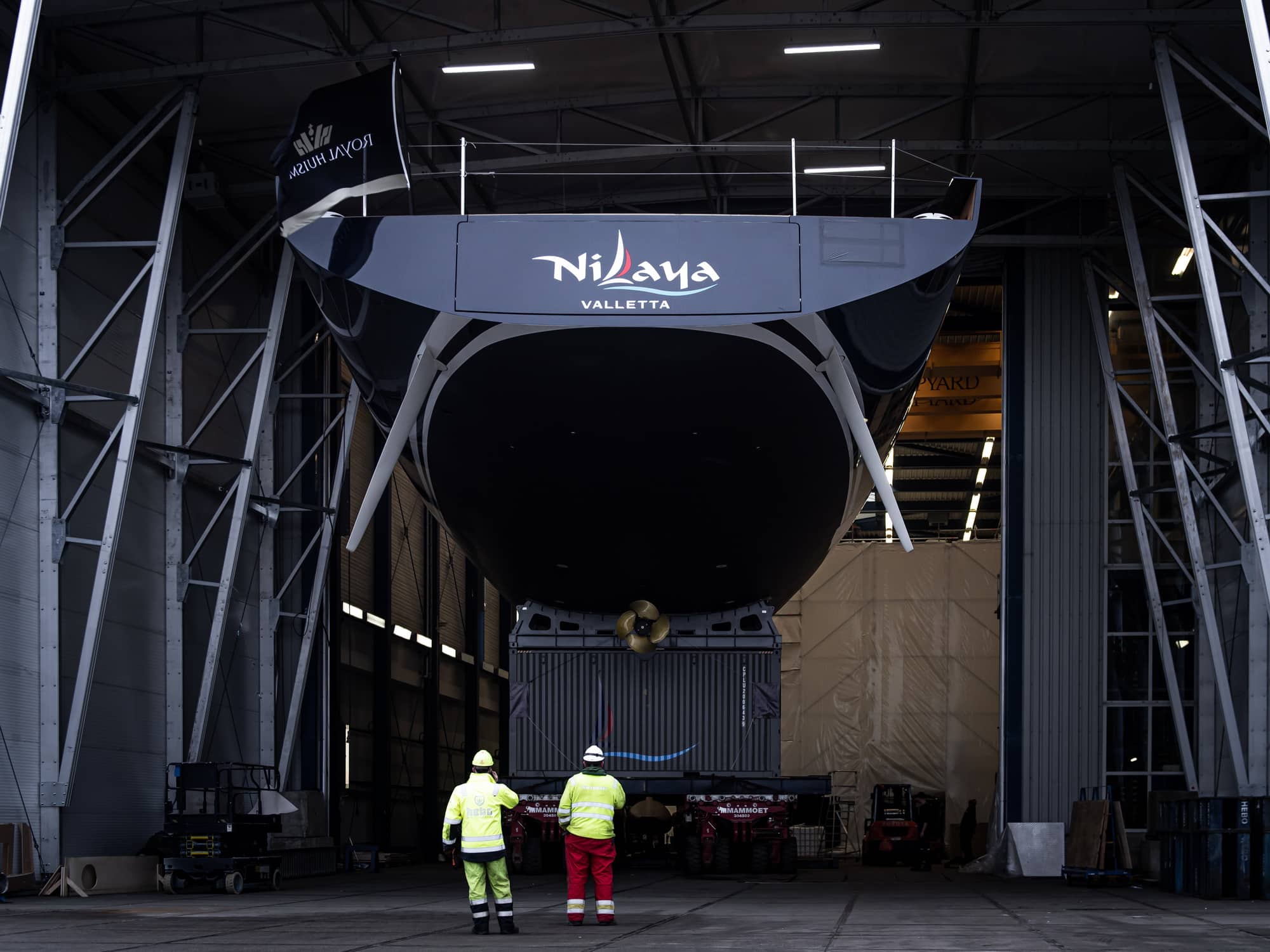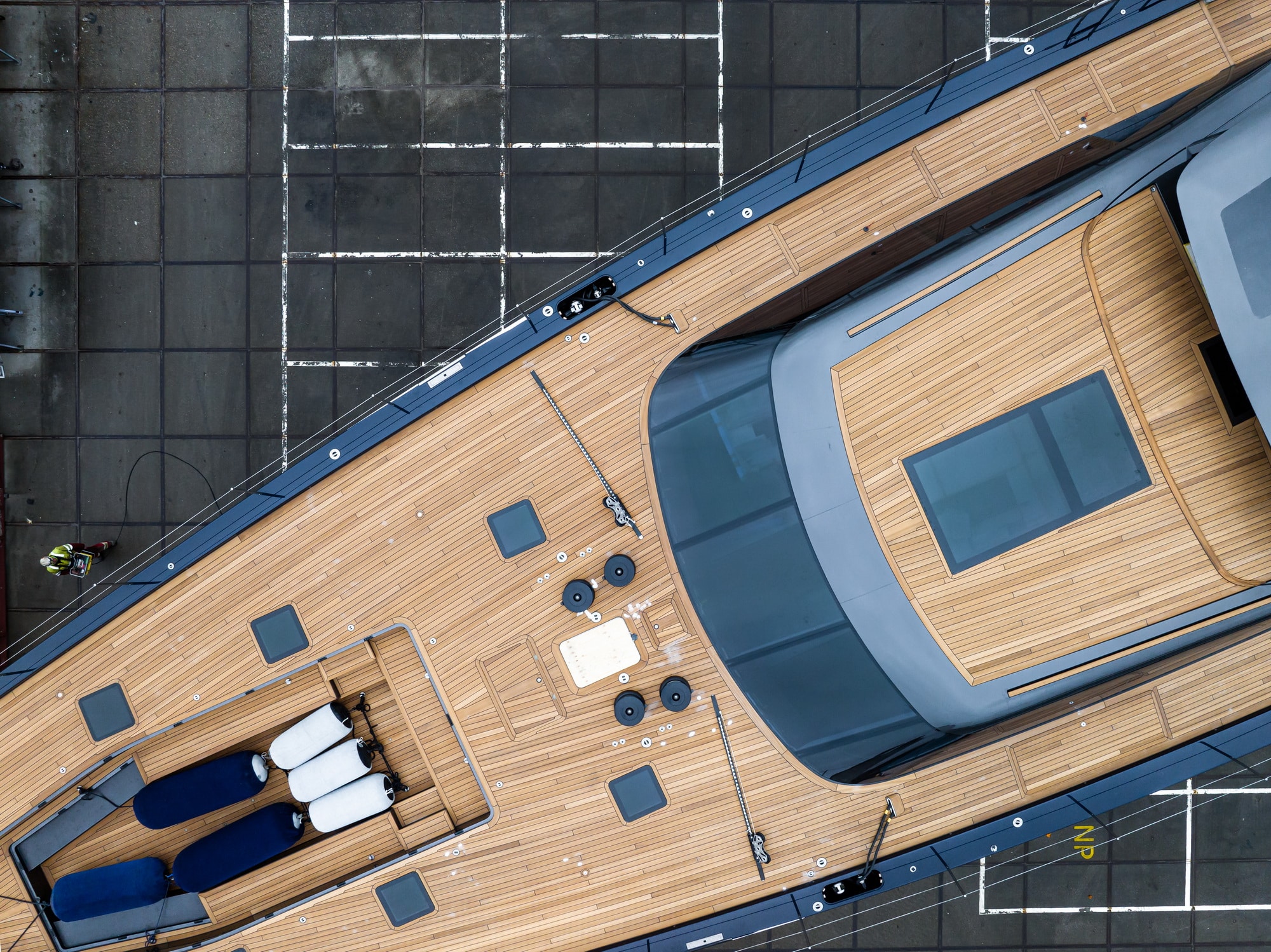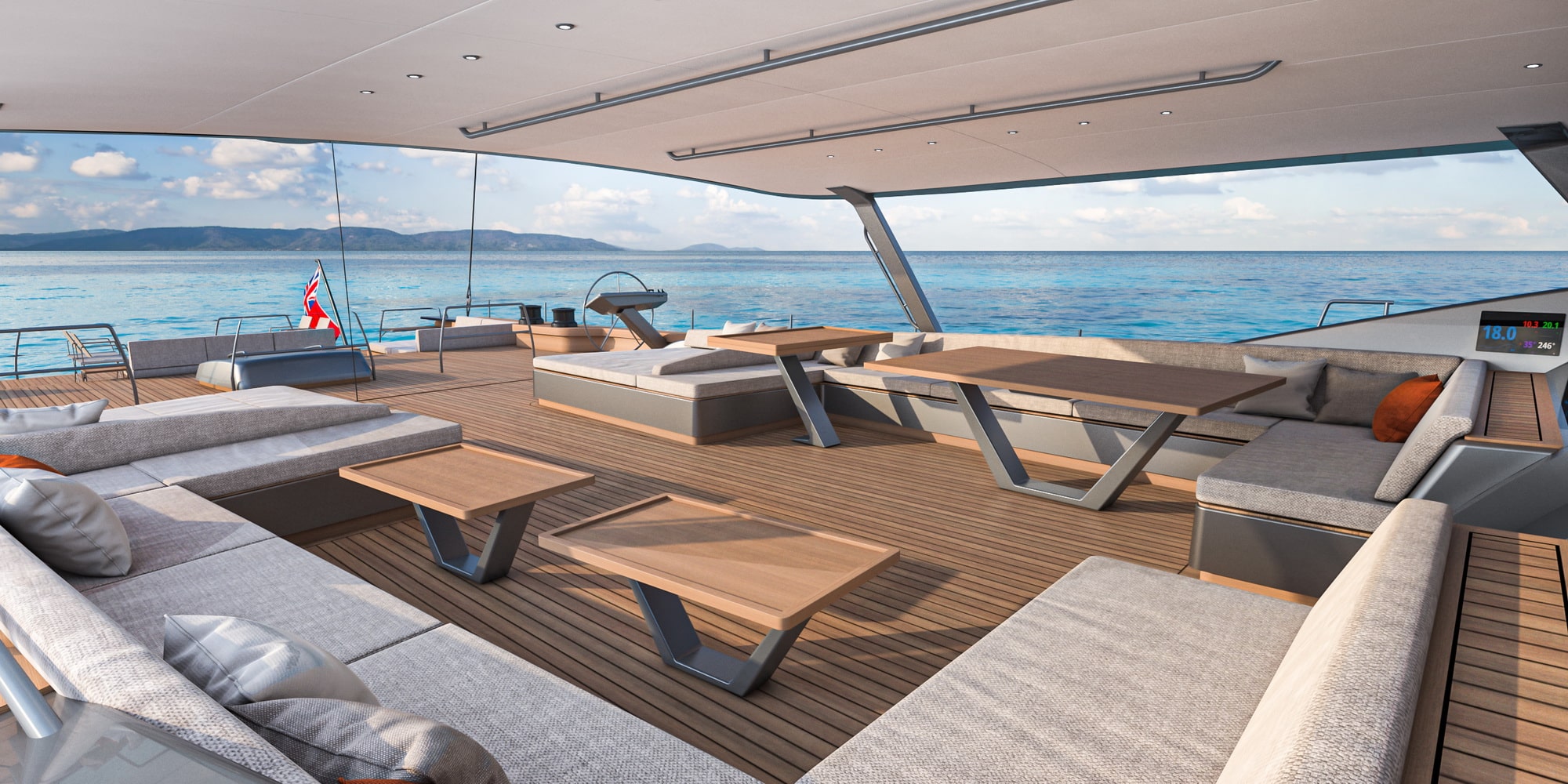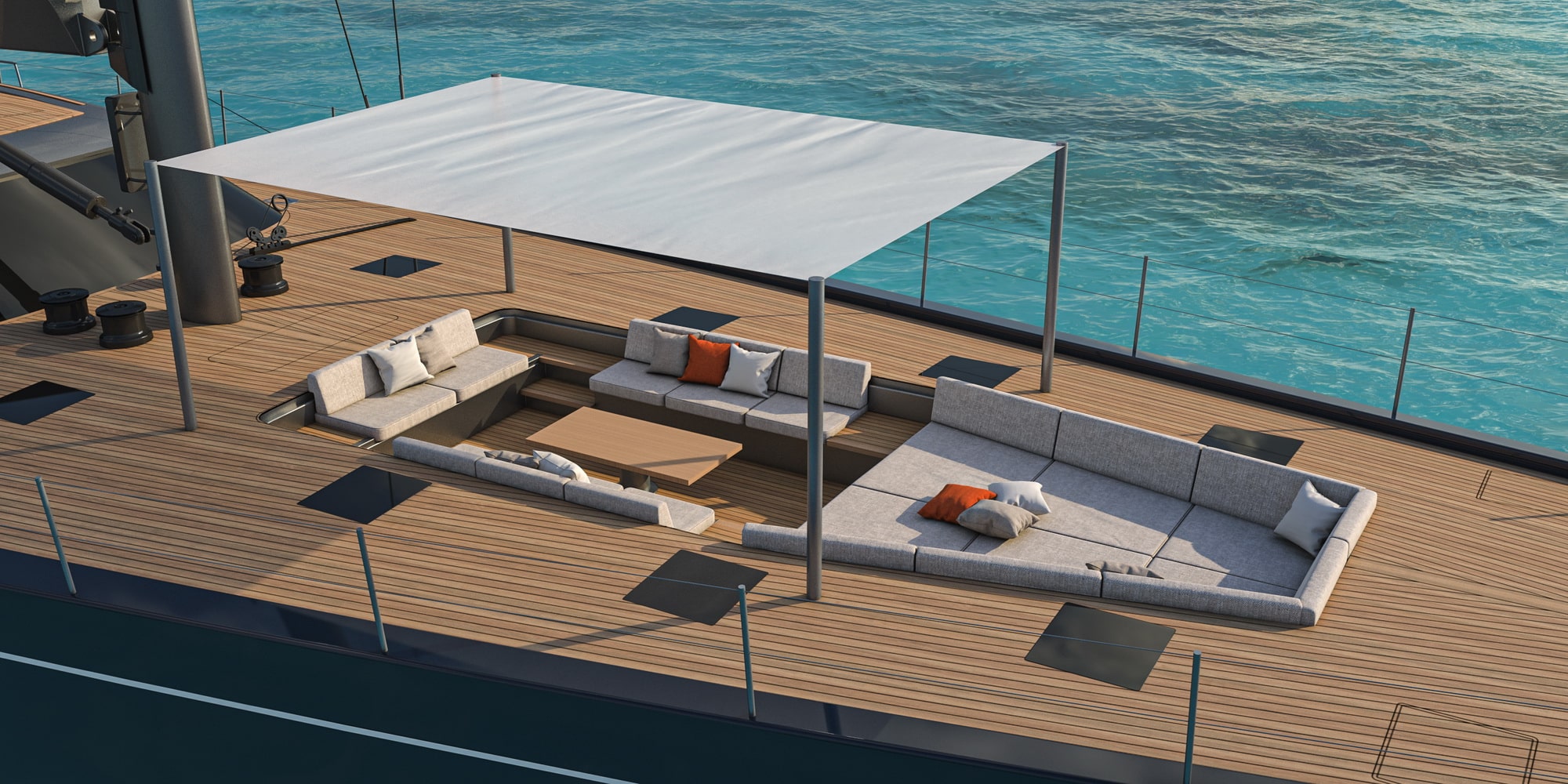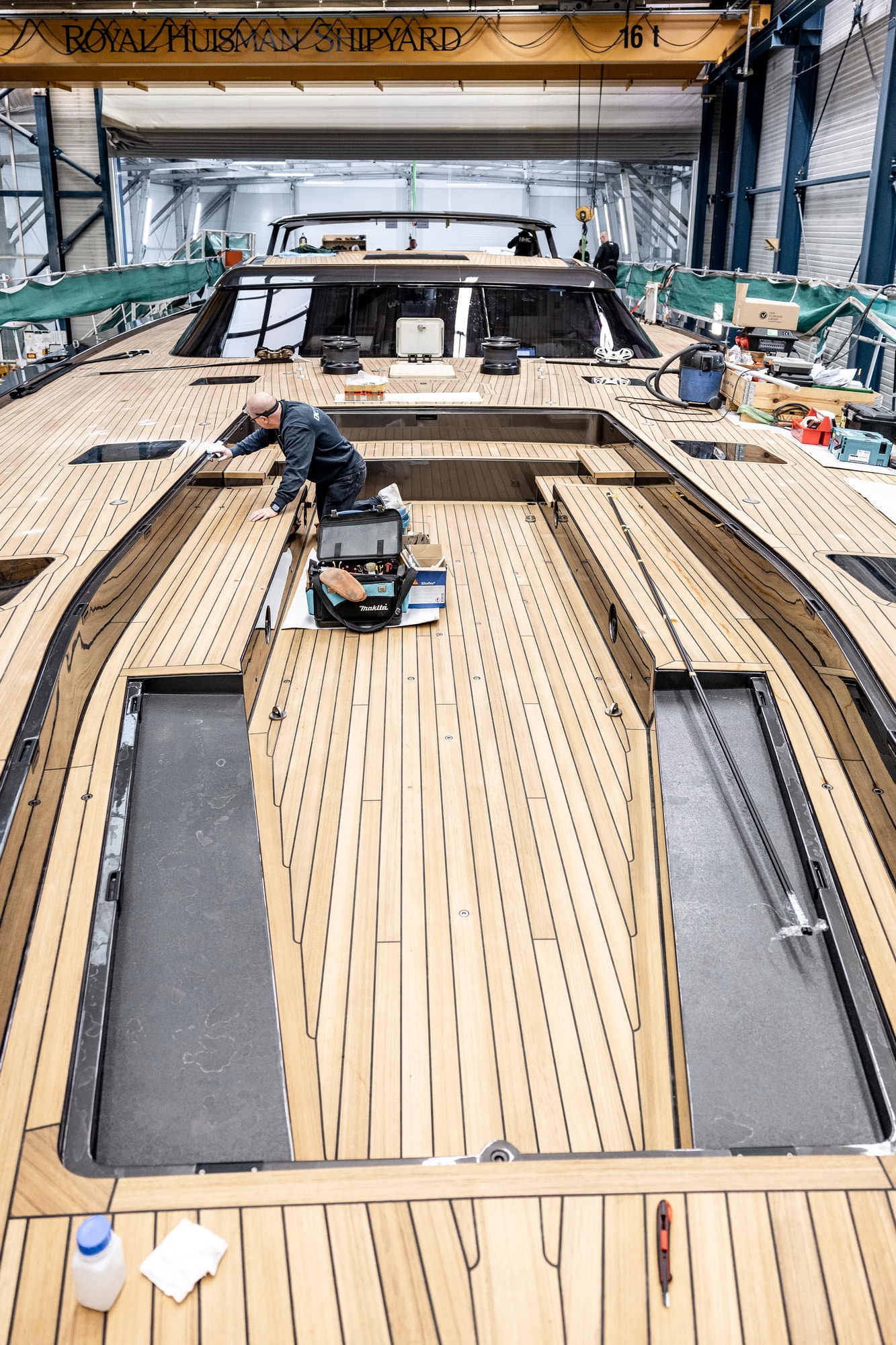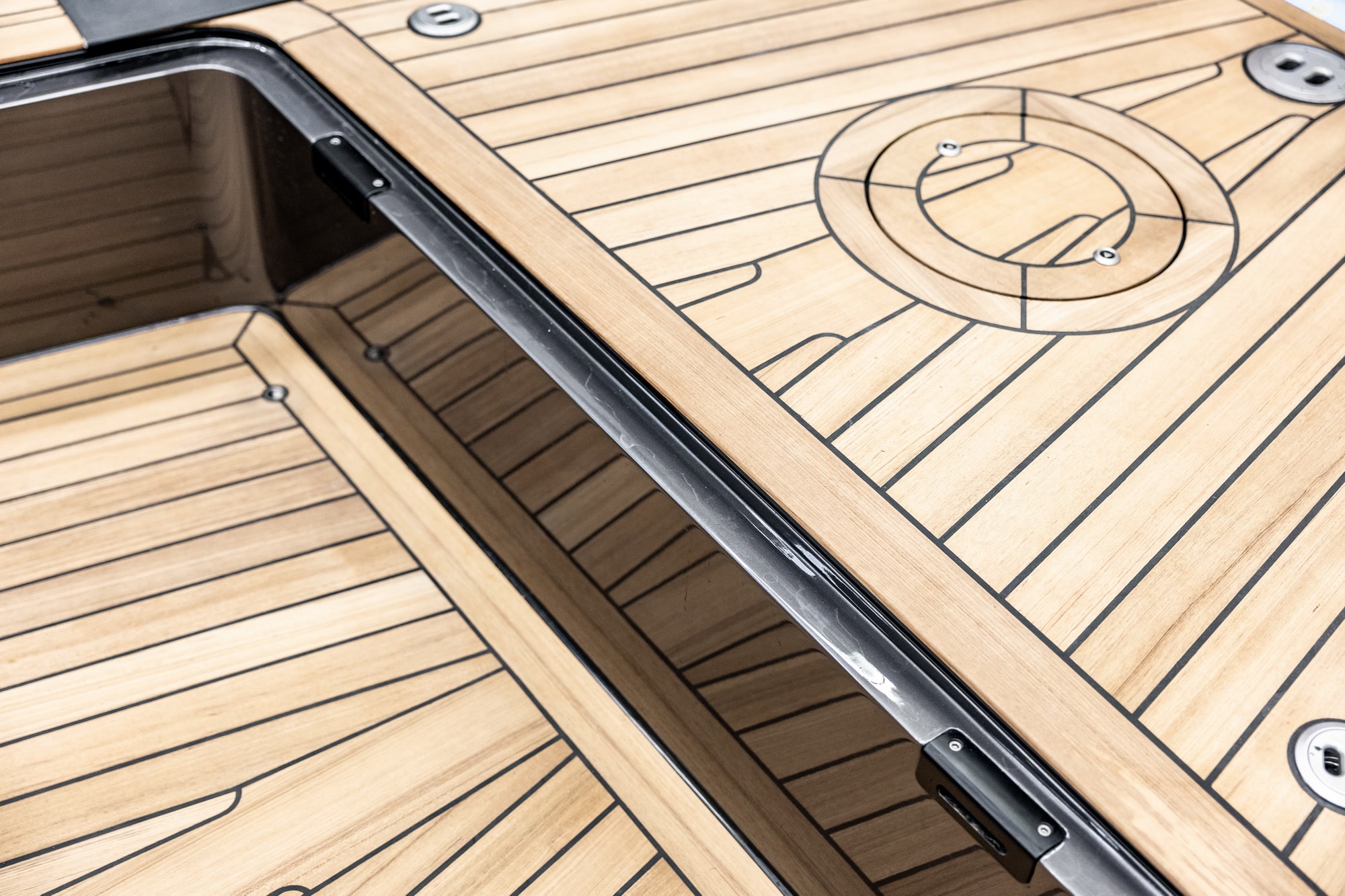“Nilaya is possibly the first truly composite superyacht of the modern era.”
An Investment in our DNA
While many aluminum vessels have some composite parts, Nilaya is much more a hybrid. The revolutionary element of the Featherlight™ method for this 46.8m / 154-foot sloop is not a single process or construction material, but a holistic light-weight method for delivering a global cruising yacht that will be completely at home competing in superyacht racing events.
Featherlight™ is an integrated, multi-disciplinary approach focusing on weight reduction through advanced construction technology as employed by the European Space Agency… Read on at this website > news > inhuis stories & updates [link]
A new course for sailing superyachts
Following an agreed overall weight target, every department was given a weight budget. With integrated teams exploring all the elements of the boat concurrently, everyone was aware of how each decision impacted others. Suggestions for improvements could be shared and analyzed real-time.
Beyond sailing performance, another positive result of Featherlight™ means that the yacht needs less power for motoring, a factor that leaves more space to the interior accommodation. In Nilaya’s case, the Royal Huisman team developed a ”tribrid” propulsion system… Read on at this website > news > inhuis stories & updates [link]
Challenging a myth
For exterior and interior designers Nauta Design, Nilaya represents the largest sailing yacht yet in its portfolio. While she may share some handsome profile characteristics with her 34m / 112ft Maxi Class racing predecessor, this 12m / 42ft longer yacht is designed for luxurious cruising, albeit with a good turn of speed.
“To combine the comfort and robustness to explore the world with the [owner’s] request for a lightweight yacht that would be responsive at the helm and competitive in superyacht regattas wasn’t an easy task,” noted Nauta’s co-founder Mario Pedol. “One option was to build in carbon fiber… Read on at this website > news > inhuis stories & updates [link]
Building a blissful home on the sea
Nigel Ingram of MCM Newport is the owners’ representative for Project 405 as well as the owners’ previous Nilaya, which he describes as “a really happy boat.” That yacht won nearly every regatta she entered. “The owners wanted a powerful performer with easy-to-helm responsiveness; basically, all the good habits of the last boat, but with more comfort and less noise.” Nilaya, after all, means “blissful home” in Sanskrit.
Traditionally, reducing noise and vibration required the addition of weight — strictly the opposite of this desired outcome. To stay within the interior weight budget, Royal Huisman made extensive sound attenuation studies and developed sophisticated composite panels… Read on at this website > news > inhuis stories & updates [link]
About Finite Element Analysis
Finite element analysis (FEA) is a complex mathematical geometric computation used for predicting how a part or an entire product will react under stresses such as load, force, heat, vibration, etc. Being able to look at a part in three dimensions also predicts how the part will react as the same stresses are being applied in its neighboring parts, thus identifying potential weak or vulnerable points that can be corrected in design. Think of it as a kind of digital prototyping but far more accurate and much faster. Solutions can be applied without having to build and test new physical models.
Royal Huisman used Finite Element Analysis (FEA) of Nilaya’s 3D model to fine-tune the engineering to “a much higher level,” according to naval architect Jim Pugh, adjusting plate thickness in the computer and predicting longitudinal stiffness or deflection without so much as touching that first piece of material. But it wasn’t just the engineering teams for carbon and aluminum structure that were involved. Royal Huisman created a new method of operation for Nilaya that kept all parties in the loop and working together from the outset.
“Bringing in the mast and sail designers early in the process has significant advantages,” said Jim Pugh. “From the aero CFD side, Rondal and the sail designers shared high quality data… Read on at this website > news > inhuis stories & updates [link]
About FeatherlightTM
Learn more on this website: follow the links to Discover > Innovation > FeatherlightTM [click here]

